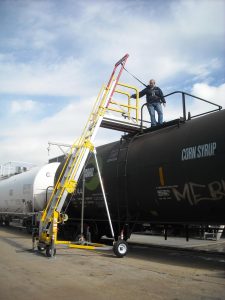Note. I want to be clear upfront that my intention is not to discredit the contribution organized labor made to the development of ISO 45001:2018. The point I make here is that they had a significant impact on the requirements in certain sections of ISO 45001:2018. This fact may help inform users about the intent of the requirements for purposes of implementation and conformity assessment.
Clause 5.4 of ISO 45001:2018 discusses requirements for consultation and participation of workers and is the result of an interest groups desire to ensure their constituents were give certain rights to have influence over the organizations OHSMS. Organized labor got a symbolic win here for their constituents but does this additional language add value to the standard or simply create unnecessary complexity and confusion for users of the standard?
As an auditor my approach would be to check if the workers themselves believe that their opinions about the OHSMS have been considered in its development and implementation. The best way to do this is to ask them directly. Here is a line of questioning I would use to get objective evidence of conformity to the participation and consultation requirements in 5,4 of ISO 45001:2018.
My first question would be something like “Have you heard about the OHSMS here?”. The answer to this question helps me get a sense of the organizations general awareness of the existence of an OHSMS. You might have to rephrase the question to get them to understand what you are asking.
The next questions would be something like… Can you tell me about what you do as your job here and what you do to keep yourself safe from injury or ill health? A good answer would be something like… My job is to load railcars. I need to stand on top of the railcar and inspect it after it is loaded. I need to wear this fall protection harness when I am on the railcar in case I accidently fell off. The harness would break my fall and prevent or reduce my chances of injury.
 The next question would go directly to participation and consultation and would be something like this. Did you participate in any of the planning part of the OHSMS giving leadership your opinion of your comfort level with safely performing you job. Another good answer would be something like…Yes, our entire crew participated in a hazard identification and risk assessment meeting where we went over all the job tasks and risks. We were asked if we felt safe doing these tasks given the safety procedures and equipment that was in place. One of the areas we raised as potentially unsafe was the absence of fall protection. Based on that, our leadership has provided us with these ladders, harnesses and showed us how to use them. I feel much safer now with this enhanced risk control.
The next question would go directly to participation and consultation and would be something like this. Did you participate in any of the planning part of the OHSMS giving leadership your opinion of your comfort level with safely performing you job. Another good answer would be something like…Yes, our entire crew participated in a hazard identification and risk assessment meeting where we went over all the job tasks and risks. We were asked if we felt safe doing these tasks given the safety procedures and equipment that was in place. One of the areas we raised as potentially unsafe was the absence of fall protection. Based on that, our leadership has provided us with these ladders, harnesses and showed us how to use them. I feel much safer now with this enhanced risk control.
Based on the results of this interview I would have good objective evidence that the intent of 5.4 had been achieved. If most other worker interviewed had a similar tale to tell I would feel comfortable in concluding that the organizations had meet the requirements of clause 5.4 of the standard.
Of course, this line if questioning could have gone in many other directions and the answers given may not have supported a finding of conformity to varying degrees. Auditors are certified and calibrated to make decisions during audits while considering all the evidence presented much like a judge does in a legal case. Auditors who focus on too much detail like expecting the auditee to produce evidence of each of the 21 individual requirements of 5.4 are missing the point and need to step back and look at the bigger picture.